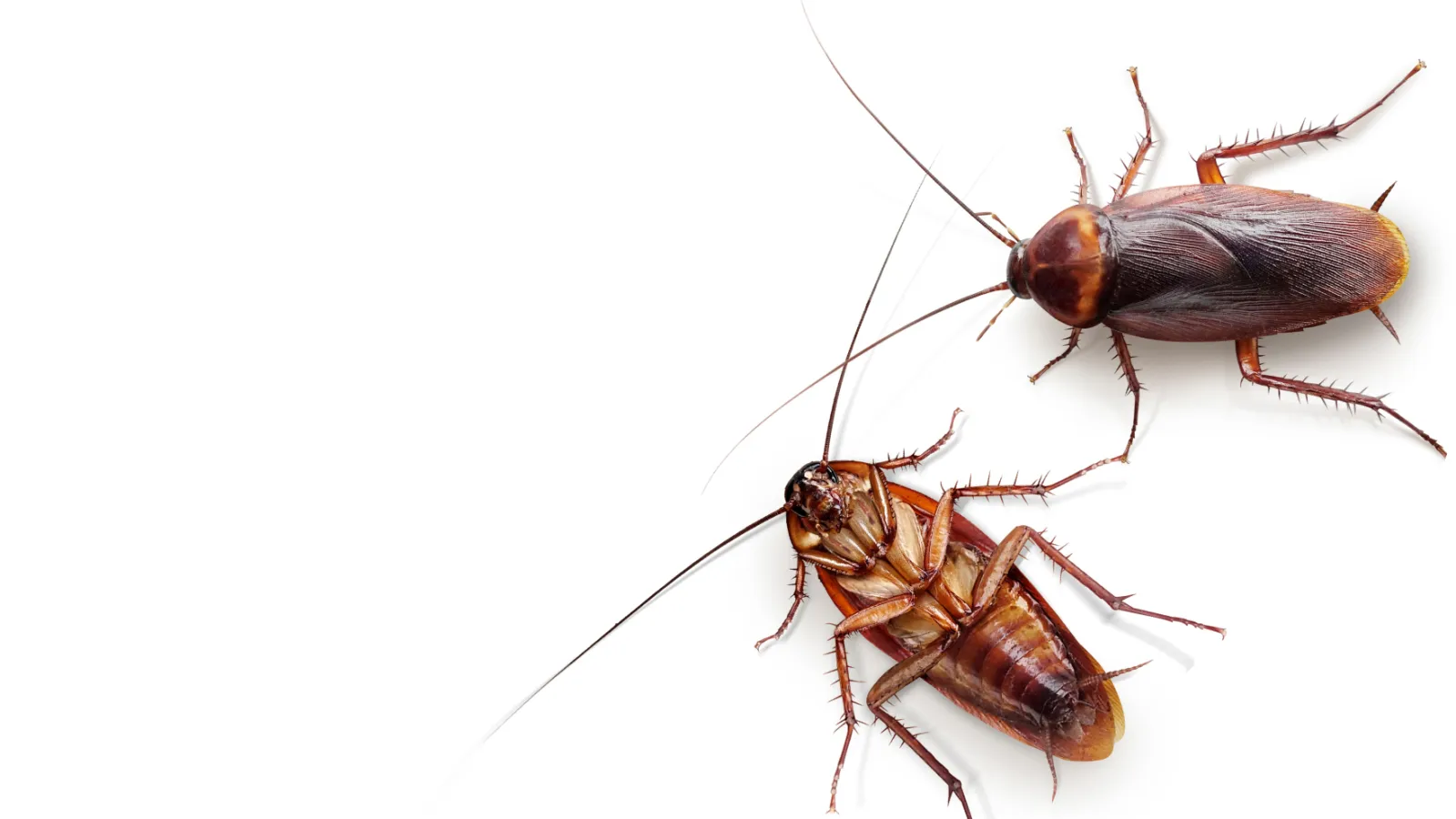
American Cockroach
Latin name: Periplaneta americana
American Cockroaches
The American cockroach, recognized as the largest house roach, poses a significant pest problem in the United States. Often referred to as the water bug, Bombay canary, or palmetto bug, this species, despite its name, is not indigenous to North America. Evidence indicates that American cockroaches may have been introduced to the continent via ships from Africa in the early 1600s. If cockroaches feel threatened, they might fly in your direction. While indeed an unsettling experience, keep in mind that they are not trying to attack you but instead are trying to flee to safety as quickly as possible.
The American Cockroach Life Cycle
The American cockroach undergoes incomplete metamorphosis, meaning it does not have distinct larval, pupal, and adult stages like insects that undergo complete metamorphosis, such as butterflies. Instead, it goes through three main stages: egg, nymph, and adult.
- Egg Stage: The life cycle begins when a female American cockroach lays an egg capsule, also known as an ootheca. The female carries the ootheca attached to her abdomen until it is ready to be deposited. Each ootheca can contain around 14-16 eggs. Once deposited, the ootheca is often hidden in a warm, sheltered location where it will remain until the eggs hatch.
- Nymph Stage: After an incubation period, which can vary depending on factors like temperature and humidity, the eggs hatch into nymphs. Nymphs resemble smaller versions of adult cockroaches but lack wings. They are white when they first emerge but soon darken to the characteristic reddish-brown color. Nymphs undergo a series of molts as they grow, shedding their exoskeleton to accommodate their increasing size. Each molt is called an instar, and American cockroaches typically go through about 10-13 instars before reaching adulthood.
- Adult Stage: Once the nymph has completed its final molt, it reaches adulthood.
The lifespan of an adult American cockroach can vary but generally ranges from several months to over a year, depending on factors like food availability, temperature, and humidity.
Where Are American Cockroaches Found?
American cockroaches are often found in warm and humid environments, particularly in urban areas. In the United States, they are prevalent in the southern states but can also be found in other regions, especially in areas with a warmer climate.
How Do I Get Rid of an American Cockroach Infestation?
While these pests are extremely common, an American cockroach infestation can be detrimental to your health, especially for those who are immunocompromised with asthma, allergies, and more. To avoid cockroaches entering your home, seal up cracks where they might try to hide, place food in airtight containers, keep a tidy home, and clean any food crumbs left behind. Unfortunately, once they make their way inside, cockroaches can be difficult to eliminate on your own.
For more information or to request a free pest inspection, contact PestNow today!
Similar Pests: Asian Cockroach, German Cockroach
FAQs About Cockroaches
Why are cockroaches so hard to kill?
Due to their hard exoskeleton, fast reproduction, and ability to survive without food for weeks.
How long can a cockroach live without its head?
A cockroach can live without its head for up to a week. They die of dehydration, not blood loss, as they breathe through spiracles.
Do cockroaches sleep?
Yes. They exhibit circadian rhythms and periods of rest.
Can cockroaches fly?
Some species can glide or fly short distances.
What do cockroaches eat?
Cockroaches are omnivores, so they eat starches, meats, sweets, and even glue or paper.
What smell do cockroaches hate the most?
Cockroaches do not like the smell of peppermint oil, citrus, bay leaves, and eucalyptus.
Where do cockroaches hide in the house
Cockroaches hide under sinks, inside electronics, behind appliances, and in wall cracks.
Can cockroaches survive a nuclear explosion?
No, but they are more radiation-resistant than humans. This is a myth exaggerated by the media.
How long can cockroaches survive without food or water?
Cockroaches can live without food for approximately one month and without water for about one week.